Gym Lingo: 75 Must-Know Gym Terms
Ever felt lost in a conversation about fitness, wondering what half the gym terms mean?
You’re not alone.
Gym lingo can feel like a secret code that makes training seem more intimidating and confusing than it needs to be.
One good way to overcome this is to learn a few common workout words.
Understanding gym lingo not only helps you confidently navigate fitness, but also enables you to train smarter, avoid rookie mistakes, and ultimately achieve better results.
In this article, we’ll define 75 of the most common gym terms, so you can walk into the gym feeling informed, prepared, and focused on getting results.
Gym Lingo You Need to Know
Here’s our list of 75 must-know workout terms.
A
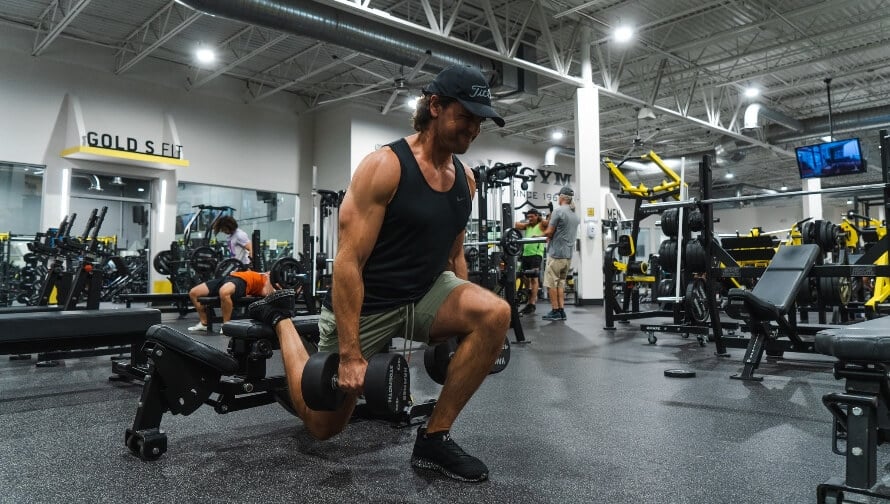
Accessory Exercises
An exercise that enhances your performance on a key exercise, such as the squat, deadlift, bench press, or overhead press.
Example: “The Bulgarian split squat is my favorite accessory exercise for the squat because it’s great for gaining balanced lower body strength without stressing your knees and spine.”
AMRAP (As Many Reps as Possible)
A training method where you perform as many reps as you can in a given time frame or until you reach failure.
Example: “I finished the workout with a 10-minute AMRAP of push-ups. I managed to do 40 reps!”
Ass to Grass (ATG or A2G)
Gym jargon for a deep squat where you lower your butt almost to the floor.
Example: “I don’t count a set of squats unless I go ass to grass on every rep.”
B
Barbell
A long metal bar used for weightlifting, that allows you to add weight plates on each end.
Example: “The overhead press is an exercise where you press a barbell from shoulder height overhead, then lower it again.”
Beast Mode
Workout lingo used by gym bros to describe a mental or physical state in which you give maximum effort and intensity during a workout.
Example: “I was exhausted after my first few sets of squats—I had to go full beast mode to finish them.”
Body Part Split
A workout routine where each session focuses on a specific muscle group, such as chest, back, shoulder, arms, or legs, often called the “bro split.”
Example: “All the great bodybuilders followed a body part split, but I prefer upper/lower.”
Brace
Fitness term for tensing your core muscles and increasing pressure inside your abdomen to stabilize your spine during exercises like squats and deadlifts.
Example: “Always brace hard before a set of heavy deadlifts.”
Broscience
Gym lingo for informal or anecdotal fitness advice often lacking scientific support. Gym bros frequently spread broscience in weight rooms and on social media, where new weightlifters often mistaken it for legitimate information.
Example: “I read that if you don’t chug a protein shake during your workout, you start losing muscle, but I think it might be broscience.”
C
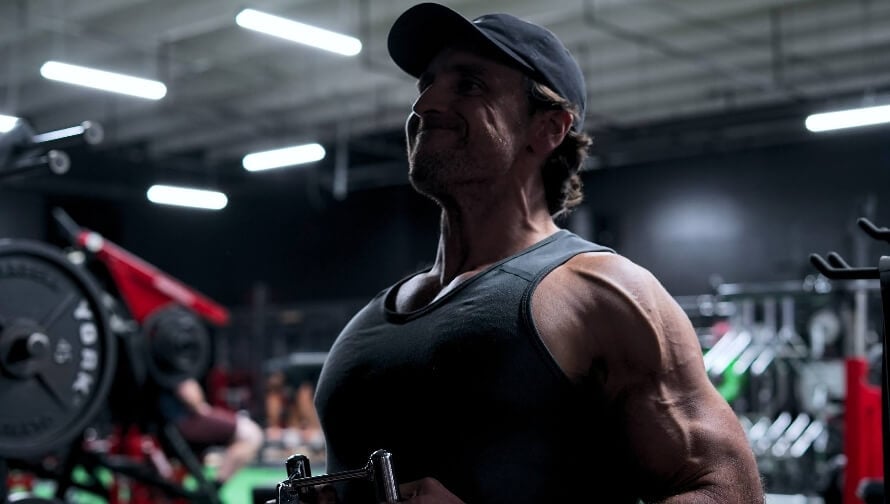
Cable Machine
A piece of gym equipment that uses adjustable pulleys and cables to allow you to perform a wide range of exercises. It provides constant tension throughout an exercise’s range of motion, which trains your muscles slightly differently than free weights.
Example: “He used the cable machine for triceps pushdowns and face pulls.”
Cardio
Short for “cardiovascular exercise.” Cardio includes activities that elevate your heart rate like running, cycling, and rowing. It improves endurance, burns calories, and supports heart and lung health.
Example: “She does cardio three times a week, alternating between running and rowing.”
Concentric Phase
The portion of a rep where your muscle contracts and shortens, such as when you stand up in the squat.
Example: “The concentric phase of a biceps curl is when you lift the dumbbell towards your shoulder.”
Compound Exercise
A compound exercise is an exercise that involves multiple joints and muscle groups. For example, the squat involves moving the knees, ankles, and hip joint and requires a whole-body coordinated effort, with the quadriceps, hamstrings, and glutes bearing the brunt of the load.
Example: “The deadlift is a compound exercise that works most muscles in your body, especially your hamstrings, glutes, and back.”
Cue
A mental mantra that draws your attention to a particular aspect of your form. For example, the cue “spread the floor with your feet,” helps you remember to keep your knees from caving in while squatting.
Example: “My favorite deadlift cue is “crush oranges in your armpits.”
D
Deload
A planned reduction in training intensity or volume, usually for a week, to help you avoid burnout from training.
Example: “After six weeks of intense training, I scheduled a deload week to let my body recover.”
Delayed Onset Muscle Soreness (DOMS)
Muscle pain and stiffness that you experience 24-to-72 hours after intense or unfamiliar exercise. It’s caused by small tears in the muscle fibers that occur during the workout.
Example: “I just started lifting weights again last week and I’m suffering from pretty bad DOMs.”
Delts
Gym slang for deltoids. The delts cover your shoulder joints and have three sections or “heads:” the anterior deltoid (“front delt”), the lateral deltoid (“side delt”), and the posterior deltoid (“rear delt”). They move your upper arm forward, upward, and backward.
Example: “The overhead press is my favorite exercise for training my delts.”
Diced
Gym term used to describe a physique with extremely low body fat and highly defined muscles.
Example: “After months of strict dieting, he finally got diced enough to see ab veins.”
Dumbbell
A short bar with weight on each end, typically used in pairs for strength training.
Example: “He grabbed a pair of dumbbells to do lunges.”
Drop Set
A training technique where you perform an exercise until failure, then immediately reduce the weight by 10-to-20% and continue for more reps until you fail again.
Example: “Drop sets are a good way to get more training done in less time.”
E
Eccentric Phase
The part of a rep where the muscle lengthens, such as lowering the weight during a biceps curl.
Example: “Don’t let the dumbbell fall during the eccentric phase of the biceps curl—controlling it may boost muscle growth.”
EZ Bar
A barbell with a zigzag shape that reduces strain on the wrists during exercises like biceps curls and skullcrushers.
Example: “He prefers using the EZ bar for curls because it’s easier on his wrists.”
F
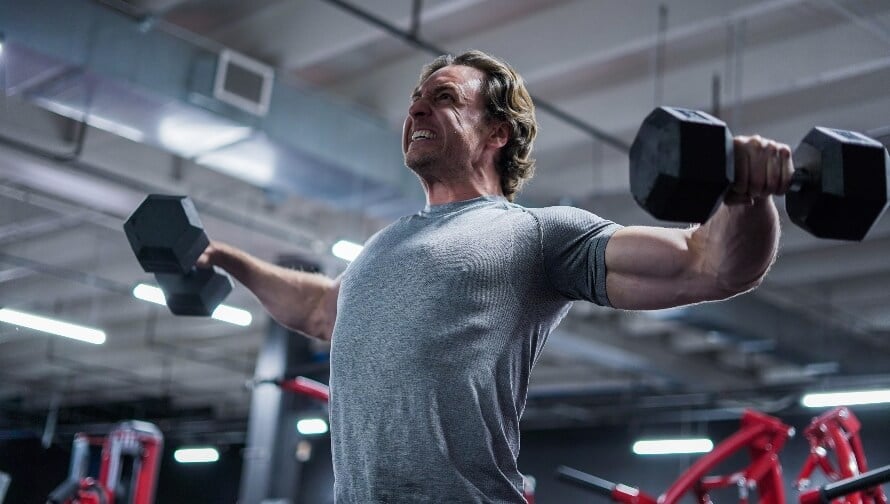
Failure
The point during a set when you can no longer do another rep with proper form.
Example: “I never train to failure—I always stay 1-to-3 reps shy of it.”
Form
The technique you use when performing an exercise. “Proper form” is gym terminology for the correct way to perform an exercise to maximize its effectiveness and minimize injury risk.
Example: “Maintaining proper form is crucial for avoiding injuries.”
Frequency
The number of times you train a specific muscle group within a set period, typically a week.
Example: “He increased his training frequency to four days per week to see if it would accelerate his progress.”
Full-Body Workout
A workout routine in which you train several upper and lower body muscle groups in each session.
Example: “I love doing full-body workouts—I find them easier to recover from than other types of training.”
G
Gains (or Gainz)
Gym slang used to refer to increases in muscle size or strength.
Example: “If you’re not seeing gains, you might not be training hard enough.”
Gear
Gym slang term for steroids, also referred to as “juice,” “roids,” or “sauce.”
Example: “He’s made a lot of progress lately, but some people are saying it’s because he’s on gear.”
Glutes
Gym slang for the gluteal muscles, the group of muscles that make up the buttocks, including the gluteus maximus, medius, and minimus.
Example: “Squats and deadlifts are great exercises for building strong glutes.”
Guns
Gym slang word for well-developed arm muscles, particularly the biceps.
Example: “He’s been working on his guns all summer, and it shows.”
Gym Rat/Gym Bro
Gym slang for a person who spends a significant amount of time at the gym, who’s also often obsessed with working out and improving their physique. Gym rats typically buy into broscience.
Example: “He’s a total gym rat—he practically lives at the gym.”
H
HIIT (High-Intensity Interval Training)
Gym term for a form of cardio where you alternate between short bursts of intense activity and brief recovery periods.
Example: “He alternates between 30 seconds of sprinting and 30 seconds of walking for his HIIT sessions.”
Hypertrophy
The scientific term for an increase in muscle size. In a fitness context, hypertrophy occurs when you lift weights, causing small tears in muscle fibers that heal and grow back bigger.
Example: “There are two kinds of muscle hypertrophy: myofibrillar and sarcoplasmic.”
I
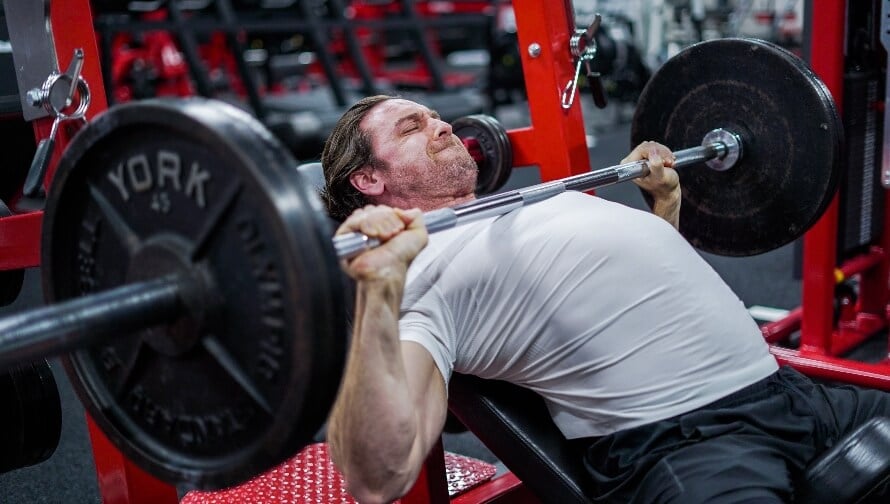
Incline Bench
A bench set at an angle, typically between 30 and 45 degrees, used for exercises like the incline bench press that target the “upper chest” more effectively than the flat bench press.
Example: “He set up the incline bench for incline dumbbell presses to target his upper chest.”
Intensity
Gym word referring to how hard someone is training. In weightlifting, you can measure it in a number of ways, with the most common being percentage of one-rep max, RPE and RIR.
Example: “Measuring your weightlifting intensity as a percentage of your one-rep max is a useful tool for periodizing your workouts.”
K
Knurling
The textured, patterned grip on a barbell or dumbbell designed to provide extra traction between your hand and the handle and make it easier to hold heavy weights securely.
Example: “To find a grip width that works for most people, rest your pinky or ring finger on the rings in the barbell’s knurling.”
L
Lats
Gym slang for latissimus dorsi, the large, V-shaped muscles on either side of your back that play a key role in pulling movements like pull-ups, rows, and lat pulldowns.
Example: “Pull-ups are a great exercise for developing your lats and building a V-tapered back.”
Lengthened Partial
A training technique where you intentionally shorten an exercise’s range of motion, performing only the portion of each rep where your muscles are most stretched.
Example: “Lengthened partials are popular at the minute, but they probably shouldn’t replace full ROM training.”
M
Mechanical Tension
Gym term for the force exerted on muscles when they contract against resistance, such as while lifting weights. Mechanical tension is the most important pathway for muscle growth, as it’s most responsible for stimulating muscle fibers to adapt and grow stronger.
Example: “Lifting heavy weights maximizes mechanical tension on the muscle fibers, which promotes growth.”
Mind-Muscle Connection
Workout term referring to the idea that by intensely focusing on a muscle as you train it, you can increase its activation and subsequent growth.
Example: “He visualized his biceps contracting during each curl to strengthen his mind-muscle connection.”
Muscle Imbalance
A size or strength difference between muscle groups or individual muscles. For example, one biceps might be bigger than the other, or your pecs might be more developed than your upper back.
Example: “Most weightlifters want to know how to spot, correct, and prevent muscle imbalances.”
Muscle Memory
The phenomenon where muscles quickly regain size and strength after a period of inactivity.
Example: “After a few weeks back in the gym, his muscle memory kicked in, and he regained his strength.”
Muscle Protein Synthesis (MPS)
The process your body uses to repair, grow, and strengthen muscle fibers.
Example: “Consuming protein after a workout helps boost muscle protein synthesis.”
N
Natty
Gym slang for “natural,” used to refer to someone who builds muscle and strength without using performance-enhancing drugs.
Example: “He claims to be natty, but he’s so big I don’t know if I believe him.”
Newbie Gains
Gym slang term for the rapid muscle and strength gains beginners experience during their first few months of consistent training.
Example: “He’s only been lifting for three months, but thanks to newbie gains, he’s already packing on muscle.”
O
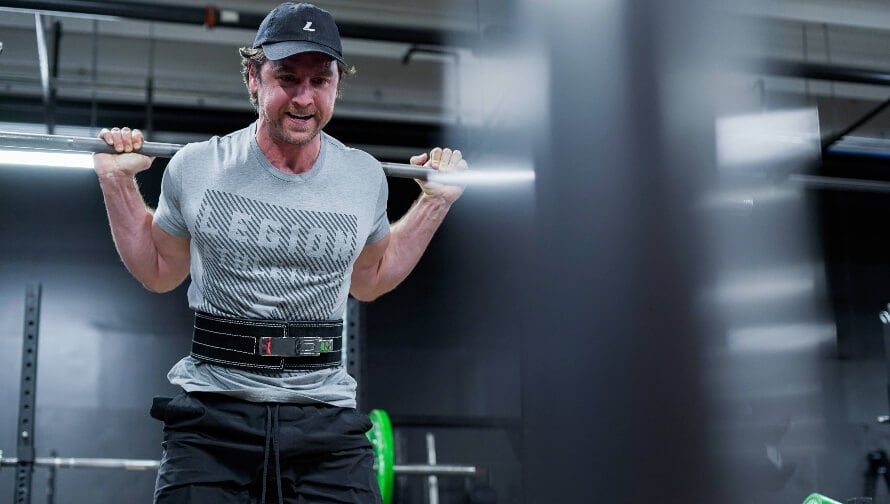
One-Rep Max
The heaviest weight you can lift for a single rep of a given exercise through a full range of motion with proper technique.
Example: “She tested her one-rep max on the bench press and managed to lift 90 pounds.”
P
Performance-Enhancing Drugs (PEDs)
Substances used to improve physical performance, muscle growth, or recovery beyond what’s possible with natural training and nutrition. Common examples include anabolic steroids, prohormones, and stimulants. PEDs often come with health risks and are banned in most competitive sports.
Example: “He’s never admitted to using PEDs, but you can tell he’s on them.”
Pecs
Gym slang for the pectoral muscles, the large muscles on the chest that are responsible for pushing movements like the bench press, push-up, and dip.
Example: “He focused on the flat and incline bench press to build big, well-balanced pecs.”
Personal Record (PR)
Gym vocabulary used to describe someone’s best performance on an exercise or activity—their heaviest squat, fastest one-mile run, or longest swim, for example.
Example: “I just hit a new PR on my deadlift—300 pounds for a single rep!”
Progressive Overload
Gym term for gradually making your workouts more challenging over time to force your body to become bigger, stronger, faster, or fitter.
Example: “Progressive overload is the primary driver of muscle growth.”
Pump
A temporary increase in muscle size and vascularity during a workout caused by increased blood flow to the muscles. Many weightlifters enjoy the swollen, tight feeling and visual effect a pump provides.
Example: “After my last set of curls, my arms were so pumped they felt like they were going to burst.”
Push Pull Legs Split
A popular workout routine that divides training sessions into three categories: push exercises (chest, shoulders, triceps), pull exercises (back, biceps), and legs.
Example: “The push pull legs split includes chest and shoulders on push day, back and biceps on pull day, and quads and hamstrings on leg day.”
Q
Quads
Gym slang for the quadriceps, the group of four muscles located at the front of the thigh: the rectus femoris, vastus lateralis, vastus medialis, and vastus intermedius. They are mainly responsible for extending (straightening) the knee.
Example: “Squats are the king of quad exercises.”
R
Range of Motion (ROM)
The movement capacity of a joint or muscle during an exercise. For example, a full-depth squat that lowers the hips below the knee uses a larger range of motion than a squat that stops before the thighs break parallel with the floor.
Example: “Using a full range of motion is crucial for maximizing growth.”
Rate of Perceived Exertion (RPE)
A scale that measures how hard you feel you’re working during a set, typically from 1 (extremely easy) to 10 (max effort).
Example: “That set felt like an RPE of 8—I probably had 2 reps left before I reached failure.”
Rep
Short for “repetition,” a single complete movement of an exercise, such as lowering and lifting the bar in a bench press.
Example: “A set of 10 reps means performing the same movement 10 times without resting.”
Rep Range
The number of reps you aim to perform in a set expressed as a range. For example, 4-to-6 reps or 6-to-8 reps.
Example: “He trains in the 4-to-6 rep range for most compound exercises.”
Reps in Reserve (RIR)
A measure of how many more repetitions you could perform before reaching muscle failure. For example, an RIR of 2 means you stopped when you felt you could have done two more reps.
Example: “If you have two reps in reserve, it means you could have done two more reps before failure.”
Rest Day
A day dedicated to recovery and not performing intense exercise. Rest days help muscles recover, prevent overtraining, and reduce the risk of injury.
Example: “He takes a rest day every Tuesday and Thursday to let his muscles recover.”
Rest Period
The time you rest between sets in a workout.
Example: “She rests for 3 minutes between sets of squats to allow her muscles to recover.”
Ripped
A gym term used to describe a physique with extremely low body fat and highly defined muscles.
Example: “I looked ripped after cutting for 8 weeks.”
S
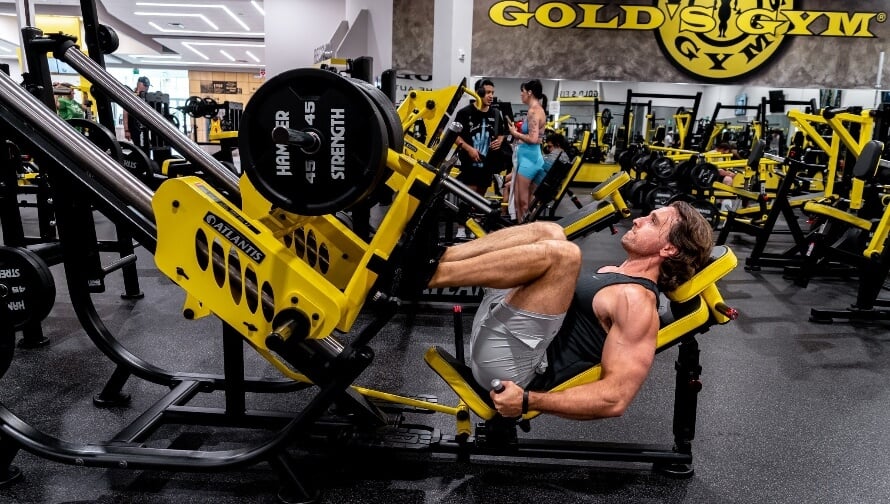
Set
A group of repetitions performed consecutively without rest. For example, you might do one set of 10 reps of the bench press.
Example: “I start my pull workout with three sets of deadlifts.”
Shredded
A gym term used to describe a physique with extremely low body fat and highly defined muscles.
Example: “He’s only been dieting for a couple of weeks and he already looks shredded”
Spotter
Gym term for a person who assists someone during an exercise. The spotter’s roles are to ensure the lifter stays safe and to help complete reps if the lifter struggles or fails.
Example: “I always ask for a spotter before I attempt a bench press PR.”
Strength Training
A type of resistance training that involves lifting weights to increase whole-body strength. Unlike other forms of weightlifting, strength training prioritizes compound exercises, emphasizes training with heavy weights in low rep ranges, and encourages regular progression.
Example: “Strength training is an excellent way to gain muscle and improve your overall health.”
Superset
A training technique where you perform two exercises back-to-back with little or no rest in between.
Example: “Supersets are a great way to shorten your time in the gym without hurting your performance.”
Swole
Gym slang, short for “swollen,” describing an extremely muscular physique.
Example: “Thor was looking pretty swole in the latest film, but I think that’s because he’s on a boatload of gear.”
T
Time Under Tension
The amount of time a muscle is under strain during a set. Broscience suggests the longer a muscle is under tension, the more it grows. However, actual science refutes these claims.
Example: “Increasing time under tension isn’t the best way to gain muscle and strength.”
Traps
Gym slang for the trapezius muscles, the large muscles extending from the back of your neck to your shoulders and upper back. The traps play a key role in movements like deadlifts and rows, and they help stabilize the shoulder and neck.
Exercise: “Rows are a great exercise for developing your traps.”
Triceps
Gym lingo for the triceps brachii, the three-headed muscle on the back of the upper arm, located between the shoulder and elbow. Its primary function is to extend the elbow, but it also assists in some shoulder movements.
Exercise: “Skullcrushers are my favorite triceps exercise.”
U
Unilateral
An exercise that trains just one side of the body at a time, like the one-arm dumbbell row or lunge. The advantages of unilateral exercises over bilateral exercises (those that train both sides of your body simultaneously) are that they help you find and fix muscle imbalances, improve your mind-muscle connection, and may help boost athletic performance.
Example: “The lunge is a great unilateral exercise for training each leg individually.”
Upper/Lower Split
A workout routine that divides training sessions into two categories: upper body exercises (those that train the chest, back, shoulders, and arms) and lower body exercises (those that train the quads, hamstrings, glutes, calves).
Example: “He follows an upper/lower split routine, training his upper body on Mondays and Thursdays and his lower body on Tuesdays and Fridays.”
V
Volume
Gym word referring to the total amount of work someone is doing. In weightlifting, you can measure it in a number of ways, with the most common being volume load (weight lifted x sets x reps), total number of reps, and total number of hard sets.
Example: “Doing 10-to-20 weekly sets per major muscle group is the perfect amount of volume for hypertrophy.”
W
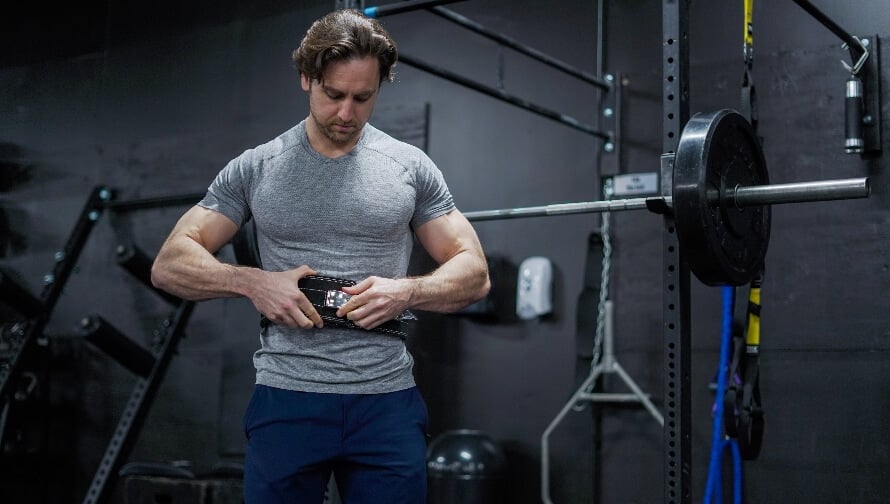
Warm-Up
A short bout of low-intensity cardio or a few easy sets of weightlifting performed before a workout to prepare your muscles for the heavier training to come.
Example: “She warmed up with a couple of light sets before starting her hard sets.”
Weightlifting Belt
A thick belt, usually made of stiff leather or nylon and 3-to-4 inches wide, that you wear around your waist while lifting weights. Most also feature a large buckle that secures the belt in place and helps to cinch it tightly around your abdomen.
Example: “I like to wear a weightlifting belt before any heavy sets of squats or deadlifts.”
Workout Split
A training plan that divides workouts by muscle groups or movement patterns across different days of the week. Common examples include the upper/lower split, push pull legs split, and body part split.
Example: “His workout split includes push and pull days and a day dedicated to legs.”
The post Gym Lingo: 75 Must-Know Gym Terms appeared first on Legion Athletics.
https://ift.tt/hfECHVP October 29, 2024 at 07:03PM Legion Athletics
Comments
Post a Comment